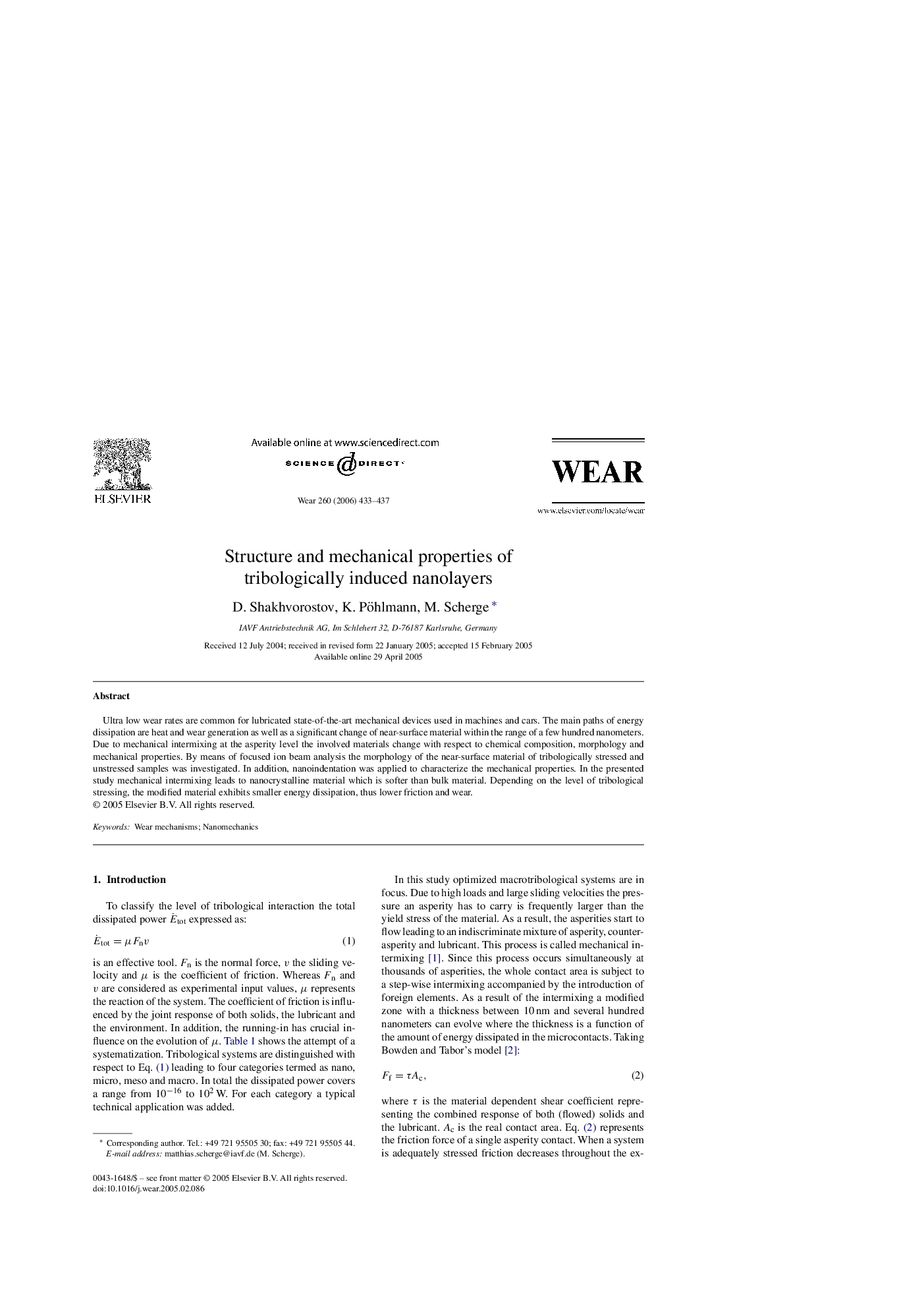| Article ID | Journal | Published Year | Pages | File Type |
|---|---|---|---|---|
| 619775 | Wear | 2006 | 5 Pages |
Abstract
Ultra low wear rates are common for lubricated state-of-the-art mechanical devices used in machines and cars. The main paths of energy dissipation are heat and wear generation as well as a significant change of near-surface material within the range of a few hundred nanometers. Due to mechanical intermixing at the asperity level the involved materials change with respect to chemical composition, morphology and mechanical properties. By means of focused ion beam analysis the morphology of the near-surface material of tribologically stressed and unstressed samples was investigated. In addition, nanoindentation was applied to characterize the mechanical properties. In the presented study mechanical intermixing leads to nanocrystalline material which is softer than bulk material. Depending on the level of tribological stressing, the modified material exhibits smaller energy dissipation, thus lower friction and wear.
Keywords
Related Topics
Physical Sciences and Engineering
Chemical Engineering
Colloid and Surface Chemistry
Authors
D. Shakhvorostov, K. Pöhlmann, M. Scherge,
